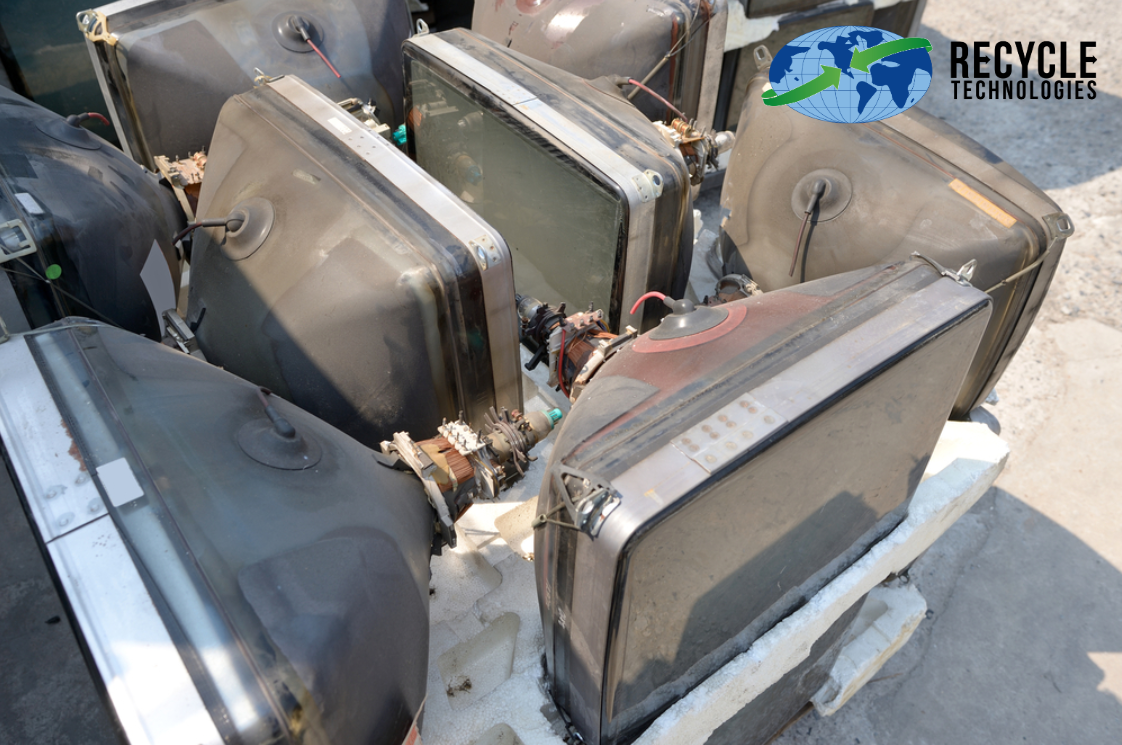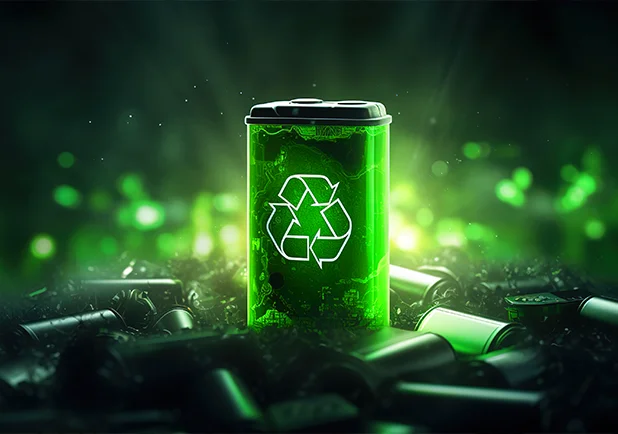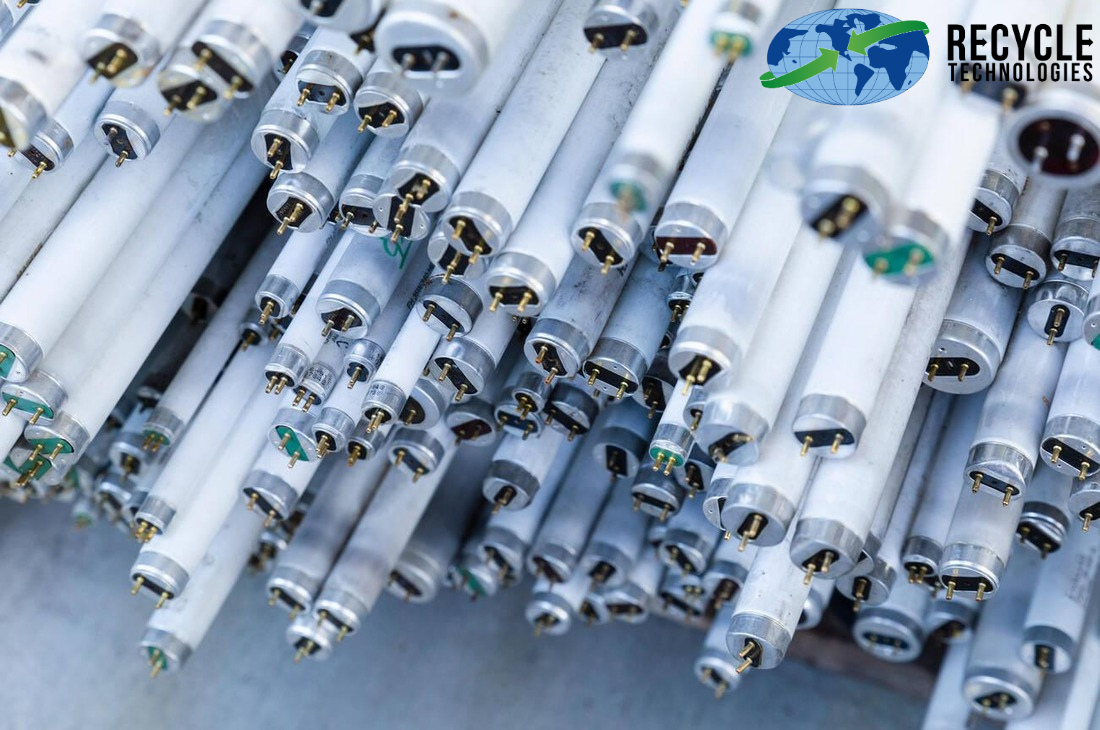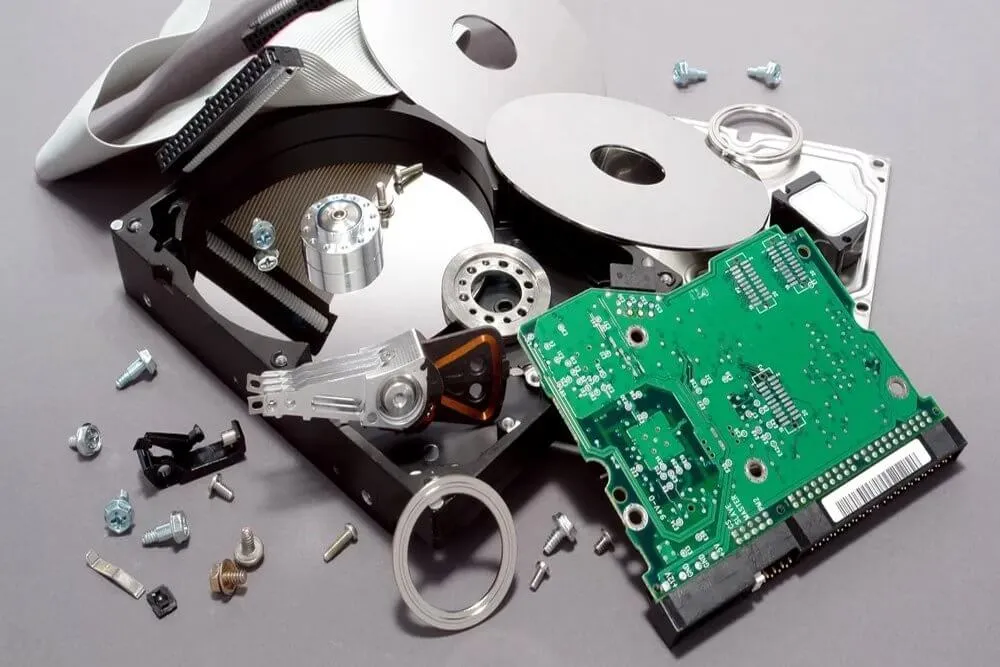Remember those bulky old Cathode Ray Tube TVs? They hold a surprising secret: hazardous materials like lead. These Cathode Ray Tube (CRT) televisions aren't just a blast from the past; they're considered hazardous waste due to the lead in their funnel glass. But wait, there's good news! Recycling these outdated giants is not only critical for the environment, it's also achievable on this Earth Day with the help of leading companies like Recycling Technologies.
Understanding Cathode Ray Tube TV
Cathode Ray Tube (CRT) technology, introduced commercially by Telefunken in Germany in 1934, revolutionized television and computer displays. CRTs remained dominant until LCD flatscreens emerged in the mid-2000s. A Cathode Ray Tube TV's key component is its glass envelope, designed with lead or barium-strontium glass to resist shattering and reduce X-ray emissions.
The Cathode Ray Tube TVs electron gun, located at the rear, emits electrons manipulated across the screen to form images using a raster scanning technique, providing high resolution. Despite superior image quality, CRTs' size, fragility, and high voltage needs led to their replacement by flat screens. However, niche applications highlight the importance of responsible recycling this Earth Day through specialized services like Recycling Technologies, which manage hazardous materials sustainably.
The Component Makeup of Cathode Ray Tube TV
Cathode Ray Tube TVs are complex devices comprised of various hazardous materials and intricate components that necessitate careful handling and disposal. Here's a closer look at the internal structure and substances found within these units:
Glass Composition
The CRT display is notably made up of several glass components: the screen, funnel, and neck. The screen typically consists of leaded potash-soda glass or lead silicate glass, designed to shield against X-rays. The funnel section is also made of leaded glass but includes a conductive coating both inside and out. The neck, similarly composed of leaded potash-soda glass, is insulated with polyethylene.
Electron Gun and Anode Cap
At the heart of a Cathode Ray Tube TV is the electron gun, which includes a heater that warms a cathode to emit electrons. These electrons are then focused and accelerated by grids towards the screen. The anode part of the CRT plays a crucial role in accelerating these electrons and collecting secondary electrons emitted by the phosphor particles. It's connected via a metal clip that expands inside an anode button embedded in the funnel glass.
Flyback Transformer and Steering Coils
The flyback transformer, or IHVT (Integrated High Voltage Transformer), supplies the high anode voltage necessary for the CRT's operation. Additionally, steering coils wrapped around the neck of the CRT tube generate magnetic fields. These fields manoeuvre the electron beam, allowing it to precisely hit points on the phosphor-coated screen, which then glows to create the image you see.
Why Cathode Ray Tube TV Recycling is Crucial on Earth Day 2024?
Cathode Ray Tube TVs, once a staple in homes worldwide, now pose significant environmental and health risks due to their hazardous material content. Recognizing the critical need for responsible disposal, the Resource Conservation and Recovery Act (RCRA) classifies CRTs as hazardous waste when designated for disposal. This classification is primarily due to the lead content in the funnel glass, which can leach into soil and groundwater, causing severe environmental damage and health risks if not properly managed.
Given the complexities and costs associated with Cathode Ray Tube TV recycling, it's crucial to engage with specialized services that can handle these materials safely and efficiently. Companies like Recycling Technologies offer, from this Earth Day to so on expert solutions that align with environmental regulations, ensuring that CRTs are recycled responsibly. By choosing such services, you contribute to a more sustainable future, mitigating the impact of hazardous waste and supporting the circular economy.
Recycling Cathode Ray Tube (CRT) TVs presents numerous challenges, primarily due to their complex construction and the hazardous materials they contain. Firstly, the infrastructure required for efficient recycling of CRT TVs is often lacking, especially in developing countries. This gap necessitates a global effort where developed countries share technology and expertise to enhance global recycling capabilities.
Economic and Regulatory Hurdles
The economics of CRT recycling also pose significant barriers. The collapse in demand for new CRTs has led to increased costs and diminished economic incentives for recycling these units. Compounding this issue, some recyclers choose to store CRTs indefinitely, avoiding the high costs associated with their recycling or disposal. Moreover, strict regulatory requirements, including the need for exporters to obtain consent from receiving countries before shipping CRTs for recycling, add layers of complexity and cost.
Technical and Logistical Challenges
On a technical level, CRTs must be manually disassembled to separate and recycle components like glass, metals, and plastics. This process is not only labor-intensive but also costly, as the glass contains toxic lead which requires a specialized process to remove and repurpose safely. Additionally, finding a reliable recycling vendor can be challenging. Many companies store CRTs due to the prohibitive costs associated with recycling, leading to potential environmental risks and liabilities.
Partnering with a certified IT Asset Disposition (ITAD) service provider on this Earth Day, such as Recycling Technologies, can mitigate these challenges. These providers specialize in the safe, efficient, and compliant recycling of CRTs, offering businesses a way to manage their electronic waste responsibly while potentially reducing costs through long-term partnerships.
How to Recycle Your Cathode Ray Tube TV
Step-by-step guide to recycling your CRT TV;
Verify Local and Federal Regulations
Before you proceed, check if your state has specific requirements that might be stricter than federal guidelines. Remember, if you're planning to ship CRTs internationally for recycling, you must notify the EPA and receive approval from the receiving country.
Choose a Certified Recycling Vendor
Partner with reputable recycling services like Recycle Technologies, which not only ensures compliance with regulations but also guarantees that your CRT TV is recycled in an environmentally responsible manner. They offer both mail-in and pick-up services, catering to individual and commercial needs.
Avoid Improper Disposal
Do not leave your CRT TV on the curb or dispose of it in the trash. These actions can lead to harmful environmental impacts due to the hazardous materials in CRT TVs.
Advancements and Future of E-Waste Recycling
Technological advancements like AI and robotics are transforming e-waste recycling, streamlining disassembly and sorting processes while reducing manual labor and health risks. Hydrometallurgy, using liquid solutions to extract metals from e-waste, offers a sustainable alternative to energy-intensive smelting, benefiting the environment.
Bioleaching with microorganisms shows promise for efficient metal extraction, reducing the environmental impact of mining. Urban mining and modular electronics design further enhance recycling by recovering materials from urban discards and promoting product repairability and recyclability. Coupled with robust Extended Producer Responsibility (EPR) programs and consumer awareness, these innovations drive a sustainable future in electronics recycling.
Final Thoughts
This guide delves into CRT TV recycling, highlighting the critical link between technology, sustainability, and environmental responsibility. It emphasizes the need for responsible e-waste management, showcasing the role of specialized services like Recycling Technologies in handling hazardous materials. The exploration of innovative recycling practices signals progress towards efficient, eco-friendly methods. By prioritizing certified recycling vendors, such as Recycling Technologies, we contribute to environmental conservation and promote sustainable practices in e-waste management.
FAQs
1. What should I do with an old cathode ray tube TV?
If your old cathode ray tube TV is still functional, consider repairing it for continued use. If repair is not feasible, recycling is the recommended option. It is important not to dispose of these TVs in the trash, as they are no longer accepted by many goodwill organizations due to their obsolescence.
2. Is it possible to recycle a cathode ray tube TV?
Yes, cathode ray tubes (CRTs) can be recycled when reuse or repair is not an option. During recycling, CRTs are disassembled to extract valuable materials for reuse.
3. Why is it difficult to recycle CRT TVs?
CRT TVs are challenging to recycle due to the presence of heavy metals, such as the nine pounds of lead typically found in the tube of the television. These components require special handling to ensure environmental safety.
4. Are there valuable components in old CRT TVs?
Yes, old CRT TVs contain valuable components such as aluminium, copper, and circuit boards. These materials can be extracted and recycled, although the cost to scrap the unit might offset any potential earnings from these materials.












